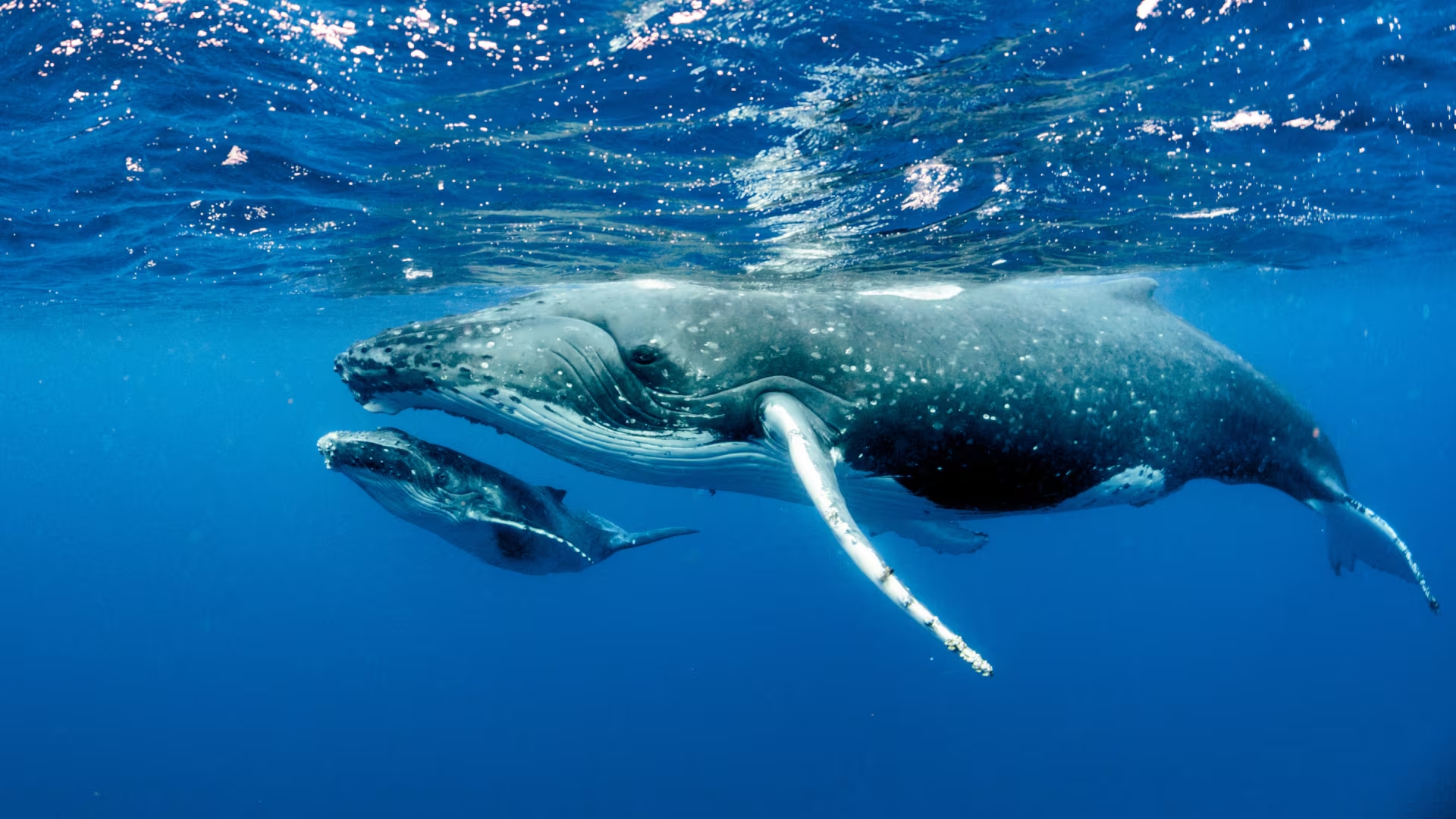A recent study published in Conservation Genetics shared a revelation about the blue whales, particularly regarding their DNA. It revealed that about 3.5% of the DNA of individuals from the North Atlantic (Balaenoptera musculus musculus) came from another species: the fin whale (Balaenoptera physalus).
In other words, they are of hybrid origin. This is a surprising fact, as it was believed until recently that hybrids between species were sterile.
The revelation about blue whales: why they are hybrids
The discovery was made by scientists from Canada and Norway. They analyzed the DNA of 31 blue whales from the Atlantic to create a genome “from scratch,” which served as a basis for comparing the genetic sequences of each individual.
 The peculiarity of blue whales.
The peculiarity of blue whales.
The study finally highlighted that hybridization can be a natural and reproductively viable mechanism in these animals.
The process by which a species acquires genetic material from another is known as introgression. It was believed that this phenomenon hardly succeeded, as hybrids like the mule or the liger (a mix of lion and tiger) are sterile.
What happens in the case of these whales
In this case, according to experts, their hybrids seem to have fertile offspring. This indicates that, despite their differences, both species are very close in genetic terms.
The first documented case of a fertile hybrid in cetaceans was in 1986 in Iceland. On that occasion, a pregnant hybrid whale was found, confirming that genetic mixing can be successful.
However, it is clarified that introgression could have negative effects, such as the loss of unique characteristics of each species.
Blue whales show more DNA from the fin whale, while the reverse occurs less frequently.
Scientists fear that the DNA of the blue whale will be lost within the population, making the species even more vulnerable to extinction.
Introgression blurs the lines between two species, which can lead to the extinction of one of them.
What a blue whale is like, the largest animal on the planet
It is a warm-blooded mammal that lives in the water and nurses its young. It can weigh up to 400,000 pounds (180 tons), equivalent to about 33 elephants, and measure around 98 feet (29 meters) long.
Its heart is the size of a small car, and during the main feeding season, it can consume around 7936 pounds (3600 kg) of krill per day.
Additionally, it is the loudest animal on Earth, even louder than a jet engine: its songs reach 188 decibels, while a jet noise reaches 140 decibels.
The low-frequency whistles emitted by the whales can be heard hundreds of miles away and are likely used to attract other blue whales.
Do you already know our YouTube channel? Subscribe!

